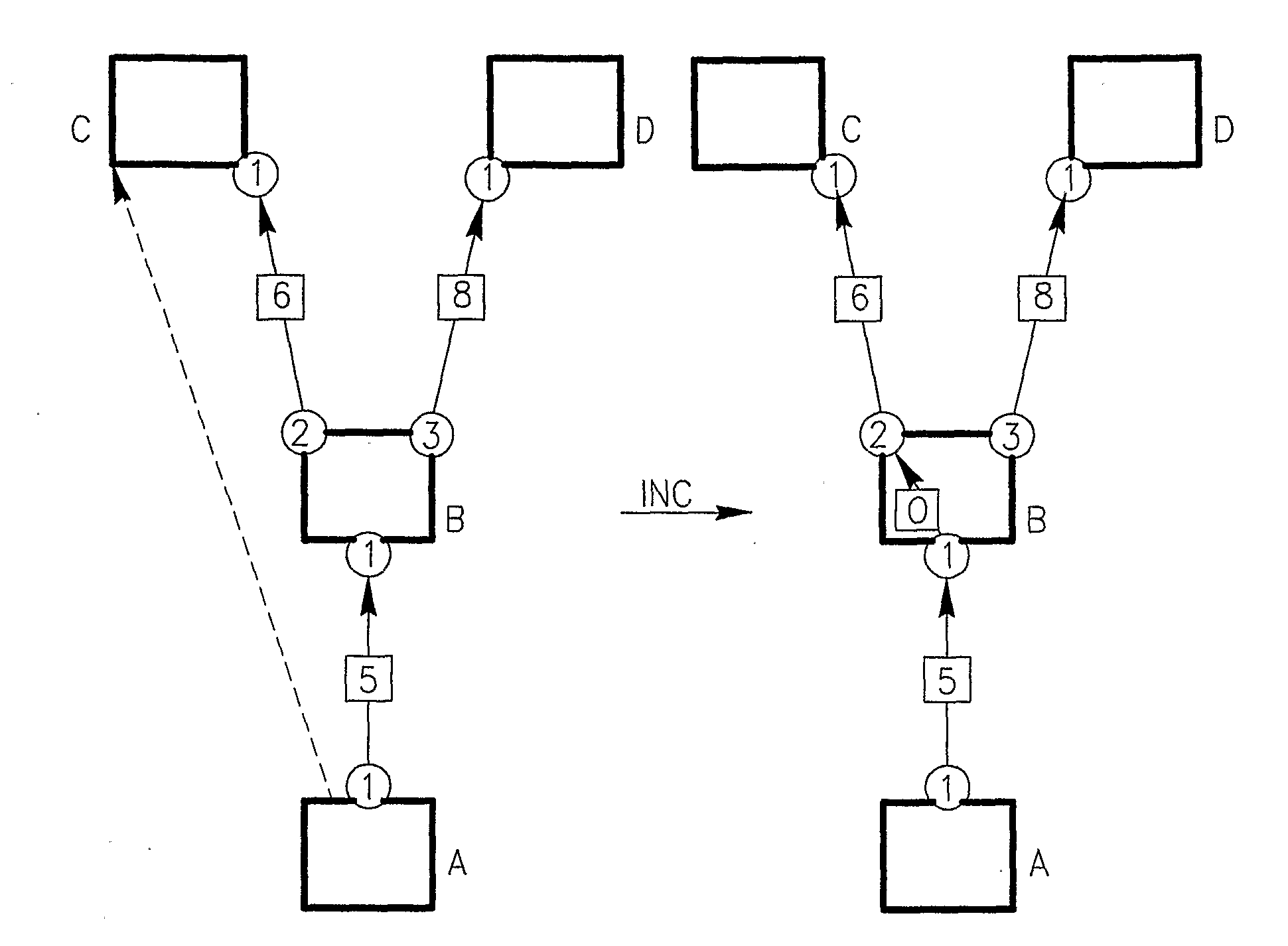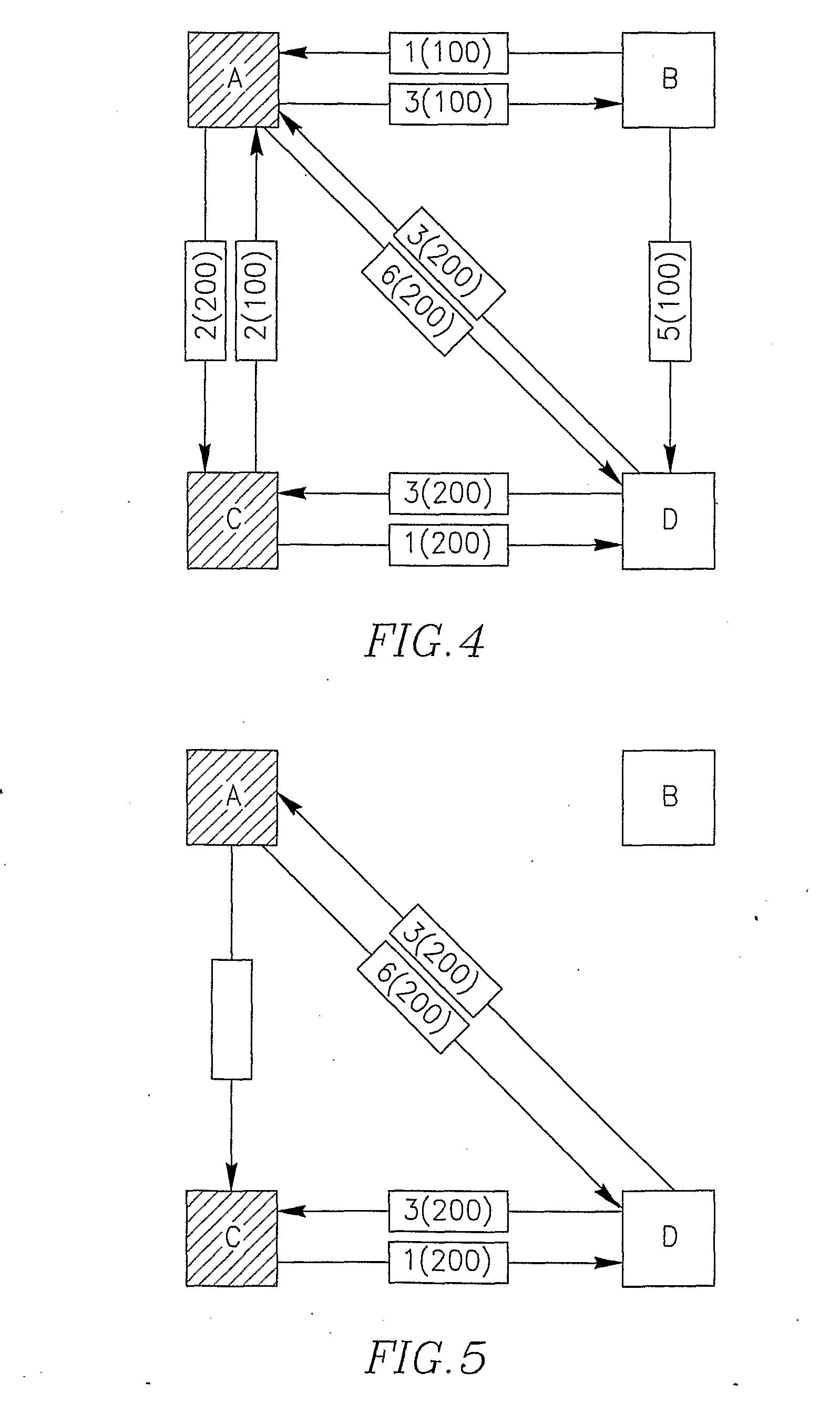Method for finding protected path in mesh networks
a mesh network and path technology, applied in the field of data networking, can solve the problems of inability to ensure a fully frr protected primary lsp, complicated path computation, and inability to solve simple pruning rules of phase 1 sometimes
- Summary
- Abstract
- Description
- Claims
- Application Information
AI Technical Summary
Benefits of technology
Problems solved by technology
Method used
Image
Examples
Embodiment Construction
[0072]FIGS. 1 to 7 have been referred to in the Background Description. In the following detailed description, general terms full / guaranteed node or node-link protection may be interchangeably used with the terms FRR segment protection, FRR node protection or FRR node-link protection, which are specifically suitable for MPLS networks. The same applies to the general terms node, path and specific terms LSR, LSP, respectively.
[0073]FIG. 8 displays introducing the intra-node connectivity operation (i.e., introducing fictitious intra-node links) into a network topology graph, for obtaining the guaranteed FRR node protection, for the link direction from node (LSR) A to node B. In this direction, the node A has a link to node B port 1, which in turn has a link from port 2 to node C port 1, and another link from port 3 to node D port 1. In that and other figures, ports of the nodes are shown as numbered circles, while values of metrics of the links are shown in small squares on the suitabl...
PUM
 Login to View More
Login to View More Abstract
Description
Claims
Application Information
 Login to View More
Login to View More - R&D
- Intellectual Property
- Life Sciences
- Materials
- Tech Scout
- Unparalleled Data Quality
- Higher Quality Content
- 60% Fewer Hallucinations
Browse by: Latest US Patents, China's latest patents, Technical Efficacy Thesaurus, Application Domain, Technology Topic, Popular Technical Reports.
© 2025 PatSnap. All rights reserved.Legal|Privacy policy|Modern Slavery Act Transparency Statement|Sitemap|About US| Contact US: help@patsnap.com



